I did research in the 20 Japanese young ladies who were treated by the lingual orthodontics to establish the Japanese Standards.
Sample and Method: 20 Adult Fremale, Average age: 22Y OM, Angle Class II and Bi-maxillary Protrusion. High angle sever cases. Lingual Appliance by Karz 7th generation. Dr. Gormans Step by step.
1: STRAIGHT Group 11 Females: Lips are behind or on the Esthetic Line on the post treatment cephalogram. 2: CONVEX Group 9 Females: Lips are in front of the Esthetic Line on the post treatment cephalogram This is a sample of the STRAIGHT Group.
There are many small SNB and SNB in the Convex type not large SNA. The Convex group had a highly Lower-1 to NB line (mm), and IMPA, and smaller FMIA. The very steep occlusal plane angle of the Convex group would be compensated the antero-posterior disorder.
1: It's very important to control of the vertical dimensions to avoid retrogressing of the mandibular retraction and long face syndrome and be careful not to open the mandibular plane angle.
2: In the high-angle case, we have to use the skeletal anchorage such as the mini-implant.
3: Upper and Lower lips must be behind or on the Esthetic line when the Lingual Treatment is finished.
4: The goal of treatment of ANB (°): U-1 to NA line (mm): L-1 to NB line (mm) must arrive at 0-6-3, 2-4-4, 4-2-5, 6-0-6
5: Up-righting of the lower incisors until the interincisal angle is to become 130-136°
6: Do a training of the mouth circumference muscle to make the beautiful smile.
View full abstract
